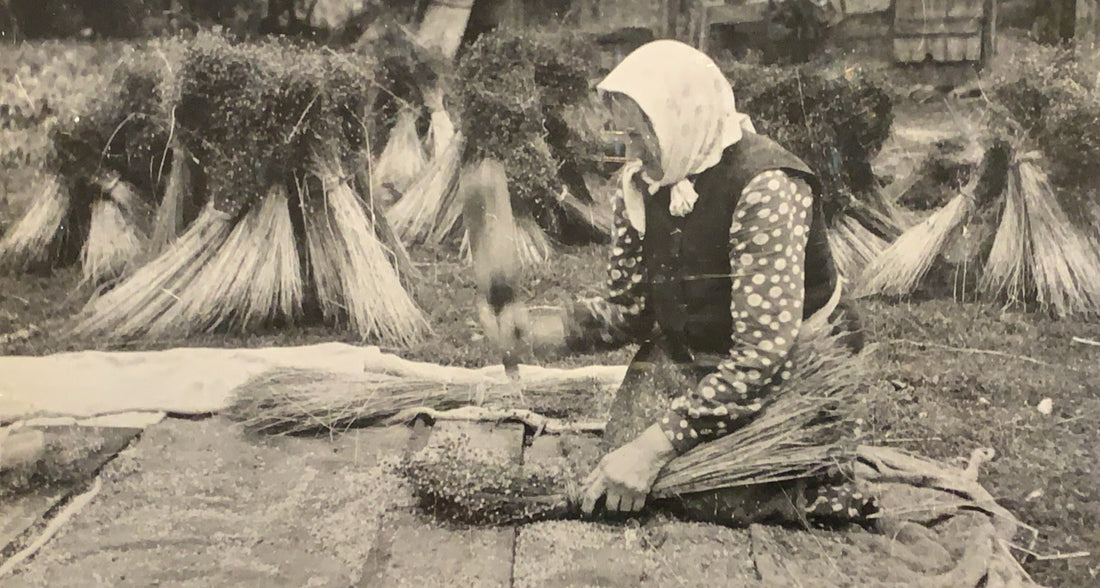
LETTER FROM A READER: LINEN STORIES
Image courtesy of Warsaw Academy of Science
We want to say thank you to Joanna Skoczynska for writing to us to share her textile story, which we extend to you - our readers.
Bought up in the 1950's and 60's in London to a Polish mother, Joanna was awarded a British Council scholarship to study weaving in Poland from 1974-1976. She studied under Krystyna Szcepanowska, the niece of Elenora Plutynska, the Professor in the 1950's of the famous Polish tapestry weavers including Magdalena Abakanowicz.
In the second year of her scholarship, Joanna went to a technical school for girls in Zakopane, deep in the mountains, where they learnt a trade. She became fascinated by Polish folk art and traditional textile techniques and skills. Image courtesy of Warsaw Academy of Science
Image courtesy of Warsaw Academy of Science
In her letter to us, Joanna shared some images collected from the Ethnography department at Warsaw Academy of Science which she was inspired by and reminded her of her time in Poland, being introduced to the rich textile history and culture, as well as textile skills. Image courtesy of Warsaw Academy of Science
Image courtesy of Warsaw Academy of Science
Belgian, Dutch and French linen are well known but we were fascinated to see the production of Polish linen documented in these images. Images that resonate with a time passed and a time cherished. Joanna believes that linen production stopped from around the 1960's but we will be endeavouring to find out more about this history and industry.  Image courtesy of Warsaw Academy of Science
Image courtesy of Warsaw Academy of Science
Joanna returned to Krakow, Poland 15 years ago.

7 comments
Dear Joanna Skoczynska,
We are reaching out to you on the blog as an old friend of yours from school has contacted us and we would like to connect you. As we do not have an email or telephone for you, we are hoping to reach you via your much loved blog feature. Please do email us at blog@selvedge.org and we can connect you.
With best wishes,
The Selvedge Team
Interesting! I am a norwegian, but i have heard that parts of Sweden “Hälsingland” had a significant production of linen in the 1700 and 1800 centuries. Perhaps interesting to know more about?
I need to correct something I wrote in my letter. When I wrote that linen production ceased in the 1960’s I meant that the cottage industry stopped but linen production as a textile industry has carried on, recently much reduced until now. In Krakow you can buy beautiful crumpled linen they tell me is produced for Armani.
Joanna Skoczynska
I think linen and embroidery was so important in European countries like Poland it would be marvellous if it could be supported I think of all the colourful clothing that was traditionally worn
influential